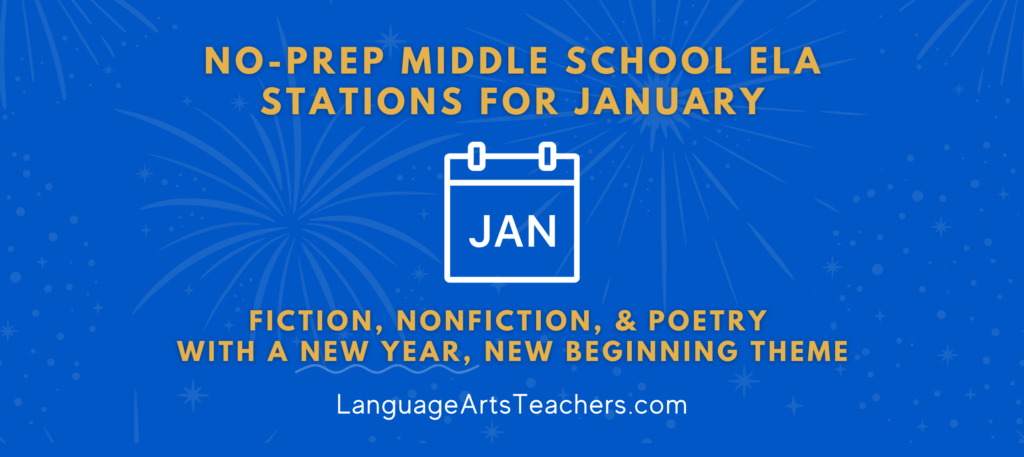Let’s be honest… teaching the writing process isn’t easy, ESPECIALLY when you have to do it online!!
That’s because teaching virtually often lacks the accountability that in-person classrooms offer. Have you found your students are completely skipping over the examples and explanations you write so they can jump to the actual writing? (We all know that never ends well…)
If so, you’re not alone, I promise!
The goal is to help students not just know HOW to write, but to actually WRITE. I’m a huge proponent of getting your students to write ALL the time!! (Click here to learn 5 ways you can get your students to write more in your class.)
And yet… for them to be effective writers, they need to understand the process itself.
So here’s how you can help them learn it in an online classroom:

Teaching the Writing Process: Break It Down
Break the writing process down into small chunks and then guide your students through each phase of writing.
What I mean by that is you give smaller writing assignments and provide more feedback. Let’s say you assign your students a simple paragraph to work on a key component of writing, like sensory detail.
You might give that short assignment back to your student several different times with feedback on what they can improve, what to change, etc.
Once the student has TRULY grasped the assignment, she can move on to the next one—dialogue, for example. You go through the feedback process again, which forces your students to actually focus on what you’re trying to teach instead of rushing ahead simply to get the assignment done more quickly.
You can also use this method to walk your students through the key phases of the writing process: pre-writing, first draft, revise, and edit.
Teaching Students to Pre-Write
Before you even teach your students to write a first draft, it’s important to brainstorm and outline what they want to even write about!!
This is crucial to teach your students because most of them will NOT do it on their own. In fact, most of them will likely try to skip this step altogether and, again, jump to the actual writing phase.
In this step, walk your kids through how to brainstorm topics they want to talk about, how to gather information, and then how to outline their writing.
Make sure you are breaking this process down into chunks. Have your students brainstorm ideas and then give them feedback. (I LOVE using free-writing in my classes… it’s a great way to brainstorm ideas!)
Have them gather helpful information they can include in their writing, then give them feedback. THEN have them write their outline and (yes, you guessed it!!) give them feedback.
Once they’ve completed this step, they can move on to the next phase…
Teaching How to Write a First Draft
Now that your students have their outline prepared, writing a first draft will be a LOT easier for them.
(These don’t have to be monstrous essays, by the way. Start them out with a smaller assignment, just so they can get used to the writing process… especially if you’re teaching 6th or 7th grade.)
When you give feedback on the first draft, make sure you don’t slip into editing mode. You want to make sure your students understand what it means to write a first draft without critiquing their grammar…
Your feedback should focus on how well they followed their outline and used the info they gathered in the pre-writing process.
Teaching the Writing Process: Revising
Before you revise your student’s first draft, make sure they have a chance to do it themselves.
During the revision process, teach your students to focus on the logical flow of their sentences and paragraphs. Do they need to be rearranged? Does the student need to add a sentence or a transition?
These are the things to focus on during revision. (DON’T focus on grammar critiques quite yet!! That’s the next step…)
Teaching Students How to Edit
This is the part we love to jump to as we’re grading assignments. But, again, it’s so important you let your students edit their own writing first before you offer your feedback.
Have your students look over their revised writing to look for grammar errors, punctuation mistakes and misspellings. Teach them how to look up a word in the dictionary if they think they might have misspelled it.
This may seem like a drawn-out process, but breaking the process down into chunks like this will help your students understand it much better than if you were simply teaching the writing process all at once (and then expecting them to go through each step themselves). 😊
This is especially helpful as you’re teaching online. You can even have digital workshops with your students, where you go over your feedback for them in a small group. (Extra points will give them a little incentive to attend!!)
Stop feeling like you have to choose between prepping for class and enjoying family time by clicking the button below to grab several weeks of free bell-to-bell lesson plans for 6th, 7th, and 8th grade.




